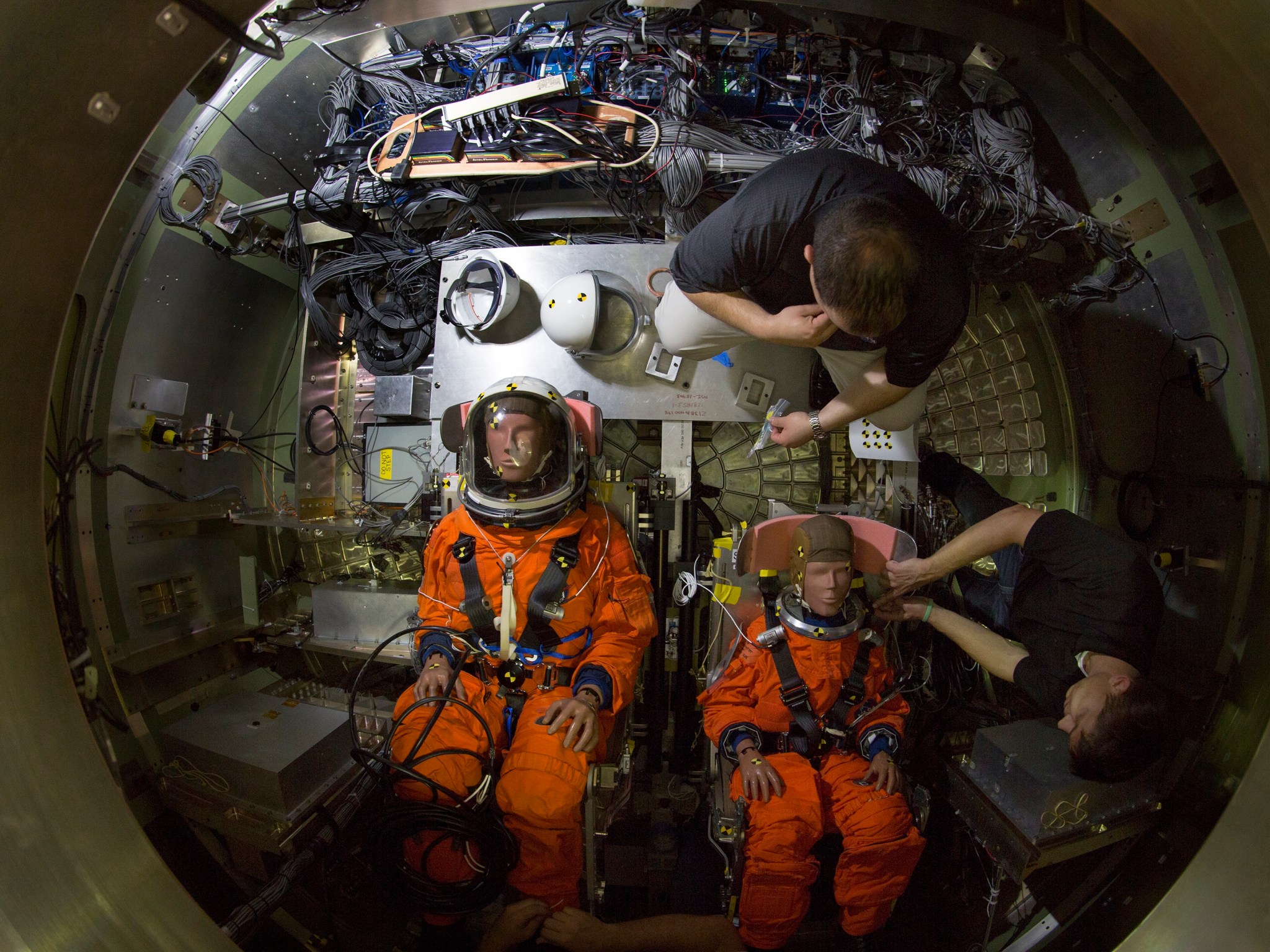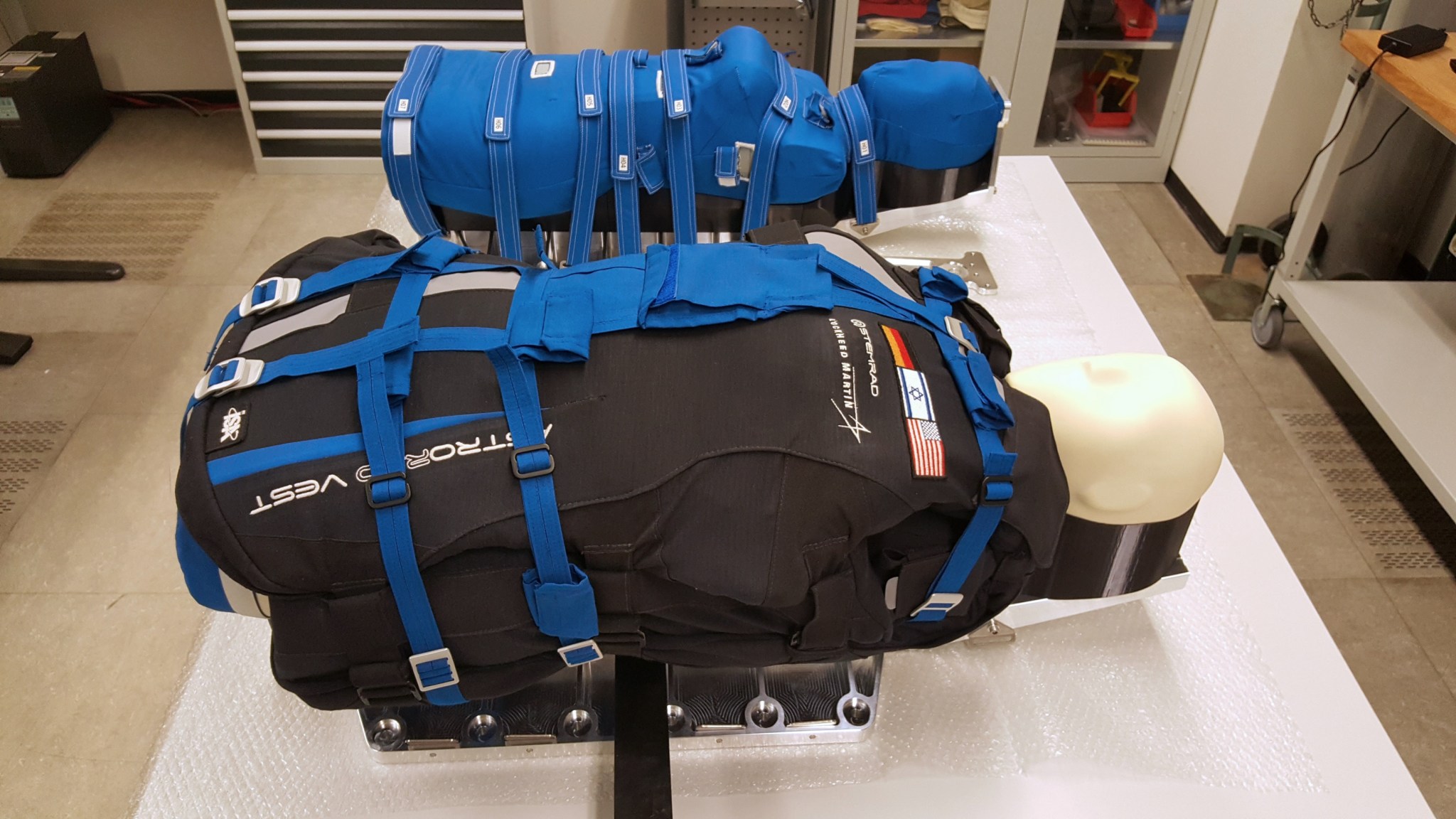When NASA’s Orion spacecraft launches aboard the powerful Space Launch System rocket for the spacecraft’s first mission around the Moon later this year, a suited manikin will be aboard outfitted with sensors to provide data on what crew members may experience in flight. As part of the uncrewed Artemis I flight test, NASA is seeking to learn how best to protect astronauts for Artemis II, the first mission with crew.
Manikins have long been used as human stand-ins for various industries, such as training for emergency rescues, developing equipment for extreme environments without risking potential harm to human subjects, and assessing potential injuries in other applications.
The manikin flying on Artemis I will occupy the commander’s seat inside Orion, be equipped with two radiation sensors, and wear a first-generation Orion Crew Survival System suit – a spacesuit astronauts will wear during launch, entry, and other dynamic phases of their missions.
The manikin’s seat will be outfitted with two sensors – one under the headrest and another behind the seat – to record acceleration and vibration throughout the mission. The seats are positioned in a recumbent, or laid-back, position with elevated feet to help maintain blood flow to the head during ascent and entry. The position also reduces the chance of injury by allowing the head and feet to be held into position during launch and landing, and by distributing forces across the entire torso during high acceleration and deceleration periods, like splashdown.

Photo Credit: NASA
The crew is expected to experience 2.5 times the force of gravity during ascent and four times the force of gravity at two different points during the planned reentry profile. Engineers will compare Artemis I flight data with previous ground-based vibration tests with the same manikin, and human subjects, to correlate performance prior to Artemis II.
“Some data collected from Artemis I will be used for Orion crew simulations and to verify crew safety by comparing flight vibration and acceleration against pre-flight predictions, then making model refinements as necessary,” said Dr. Mark Baldwin, Orion’s occupant protection specialist for lead contractor Lockheed Martin.
Five additional accelerometers inside Orion will provide data for comparing vibration and acceleration between the upper and lower seats. As Orion splashes down in the Pacific Ocean, all accelerometers will measure impact on these seat locations for comparison to data from water impact tests at NASA’s Langley Research Center in Virginia to verify accuracy of pre-flight models.
“It’s critical for us to get data from the Artemis I manikin to ensure all of the newly designed systems, coupled with an energy dampening system that the seats are mounted on, integrate together and provide the protection crew members will need in preparation for our first crewed mission on Artemis II,” said Jason Hutt, NASA lead for Orion Crew Systems Integration.
This same manikin was previously used in a series of Orion vibration tests, both at NASA’s Johnson Space Center in Houston and Kennedy Space Center in Florida, to verify it was an accurate physical representation for testing on Artemis I, to qualify the Orion seat for Artemis missions, and to determine if the crew displays will be readable during launch and climb to orbit.
Manikins have also served as body doubles during training scenarios to ensure astronauts are able to perform medical interventions successfully while traveling inside the Orion spacecraft, such as CPR or the Heimlich maneuver. For example, Astronauts use a manikin for training on the ground and on the International Space Station that requires crew members administering CPR to anchor both themselves and the patient to perform the life-saving measure successfully without gravity.
Similarly, tests that risk injuring human subjects are demonstrated with a manikin before bringing in crew members, such as crew module uprighting system evaluations intended to ensure the spacecraft is right-side up after splashdown.
“We tested a spacecraft uprighting system failure scenario with manikins to determine if astronauts could safely get out of their seats in the event they were stuck upside down in the water after splashdown,” said Hutt. “The manikin was subjected to a series of drops as engineers confidently figured out how crew could safely climb out of Orion after spending a couple of weeks in deep space.”
Similar to manikins, NASA uses Anthropometric Test Devices, or “crash test dummies,” that are equipped with various instruments for other crew safety evaluations. Dummies are used in tests that drop a test version of Orion from an aircraft, with the final set of tests scheduled for later this year, to verify the Artemis II seat and suit can limit the risk of head and neck injury during the most severe acceleration environments – abort and landing. During water impact drop tests at Langley, dummies also occupied crew capsule prototypes to help engineers better understand what Orion and its crew may experience when landing in the ocean after missions to the Moon.
Also along for the journey during Artemis I, and contributing radiation data, are two other occupants – identical phantom torsos named Helga and Zohar – which will occupy the lower two seats on Orion. Helga and Zohar will be part of a study called Matroshka AstroRad Radiation Experiment (MARE), which is designed to measure the amount of space radiation astronauts may experience inside Orion during missions to the Moon, and to assess a radiation-shielding vest – called AstroRad – that may reduce exposure. The vest is currently being evaluated by astronauts on the International Space Station for fit and function.
Each of these purposeful passengers aboard Orion inform astronaut working conditions and safety, helping NASA and its partners better prepare for – and minimize – the potentially harmful effects from deep space missions for space travel farther from Earth, and longer in duration, than ever before.
Orion is a critical component of Artemis for NASA’s deep space exploration plans and, together with the SLS rocket, Exploration Ground Systems, Gateway in lunar orbit, and Human Landing System to the surface of the Moon.
Related:
By Laura Rochon
Johnson Space Center



























